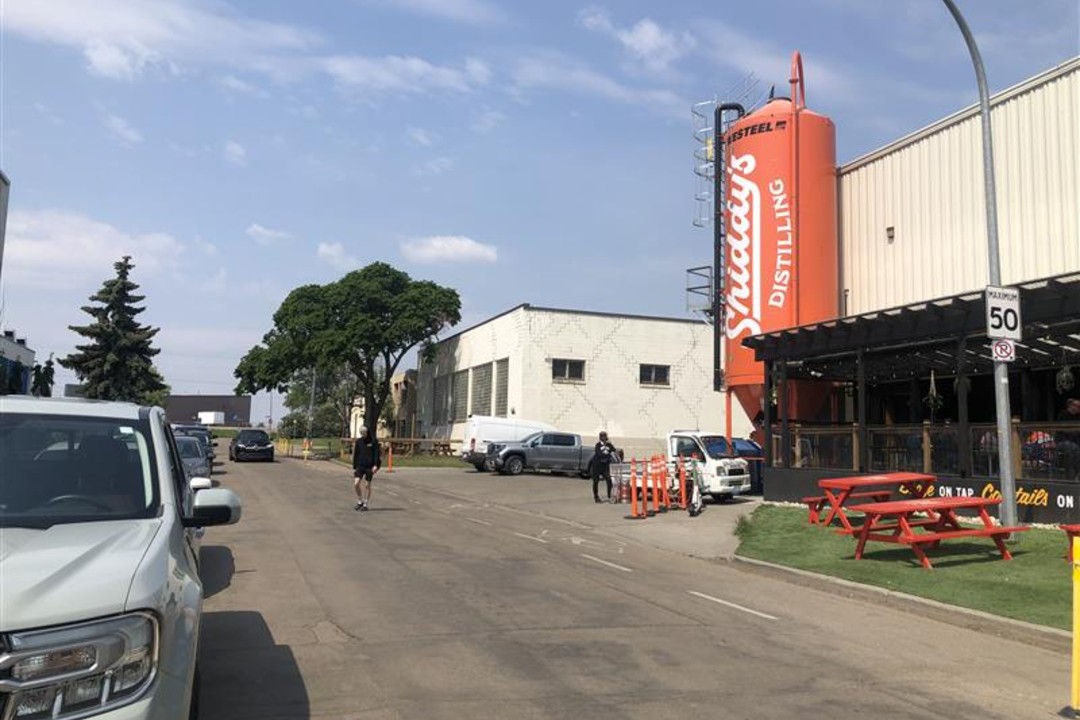
Happy Beer Street brewers propose car-free street for patios and pedestrians
If the sun’s out on a Saturday, the street in front of Bent Stick Brewing is plastered with people, co-owner Cole Boyd told Taproot.
“Specifically on weekends in the summer, if the weather’s at all nice, the street is nuts,” Boyd said in an interview at the Bent Stick taproom. “Like, it’s almost not good to have cars on (the street), because there’s so many people that are actively using this area.”
That’s why he and his neighbours at Shiddy’s Distilling and Rumpus Room, Blind Enthusiasm Brewing Company, and the yet-to-open Yeasty Boys Brewing, are working with the City of Edmonton to establish an entertainment district on 78 Avenue NW, a particularly dense node of what’s called Happy Beer Street, which stretches along 99 Street between Whyte Avenue and 60 Avenue. Mile Zero Dance, (a venue on 78 Avenue that offers intoxication in the form of dance and theatre instead of drinks), is part of the entertainment district plans, too.
In 2024, the city set up entertainment districts downtown on a stretch of Rice Howard Way and in 2025, it established another on a portion of 104 Street. In both cases, the street is closed to vehicle traffic and patrons can consume food and alcohol that they purchase from adjacent restaurants as they walk along the street.
Establishing a district on 78 Avenue would “free up pedestrian space for people to use the street on those weekends (when it runs), but also open up avenues of collaboration for (the breweries). We can maybe put some light music on the patio, we can do markets, we can really make it a hub for entertainment and use our beers to sort of facilitate that,” Boyd said.
“For Edmonton to have a brewery-centric spot where you can walk out the door with your beer and have it on the street and listen to a street performer, or watch a Mile Zero dance performance on the street — stuff like that would be something that would draw more people from outside of our neighborhood to the street, but also from outside of our city to Edmonton.”
Boyd said he hopes the district will be in place by this fall. There are still municipal procedures to go through, including community engagement.
The closure to vehicles would result in the loss of some car parking, but Boyd said he isn’t worried about that, as many customers walk, bike, or take transit to the area. “We already don’t have a ton of parking and it hasn’t really been an issue,” he said.
The street is nearly unrecognizable compared to even 10 years ago. It’s transformed from a street with mostly vacant light industrial buildings directly beside the CPKC rail right of way to an essential stop on any brewery tour. The city is even building a bike lane along 100 Street to connect the street to the active transportation network in Strathcona. The proposed entertainment district is a natural next step for the up-and-coming area, Boyd said.




